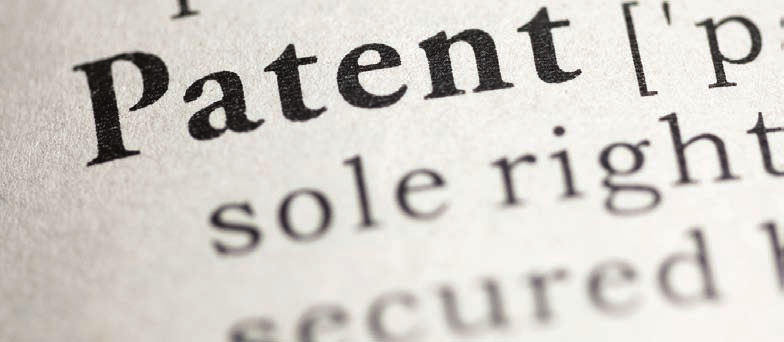
Shape and 3D Marks - A Twisted and Convoluted Path
The year of 2017 had many highlights in the field of IP, both highs and lows. But, surely, one of the biggest and most widely covered highlight (albeit a low- from a brand owner’s perspective) was Nestle not being granted trade mark rights for the shape of its Kit Kat chocolate (four finger bar) in the United Kingdom. It seemed inconceivable that the four finger Kit Kat bar, so famous for its silver foil wrapping and pure joy of sliding one finger down the foil to break a bar, could not obtain statutory rights under the UK trade mark law. This ‘sweet and sour’ development certainly may have an impact on the Indian position pertaining to shape and three dimensional (“3D”) marks.
In India, the Trade Marks Act, 1999 (“TM Act”) defines both a ‘mark’ and a ‘trade mark’ to include ‘shape of goods’. There is, therefore, no doubt about the fact that the shape and 3D marks are recognized under the Indian statute. As far as India is concerned, shape and 3D marks are considered as a “nontraditional trade mark”. In fact, in India, the Trade Mark Registry and Indian Courts, have both recognized and protected shape and 3D marks in India.
At the Trade Mark Registry level, a brand owner seeking to protect their shape or 3D mark must satisfy the test of distinctiveness, set-out in Section 9 of the TM Act. The brand owner must show that the shape or 3D form per se has acquired distinctiveness and is, stand-alone, capable of holding trade mark significance. The brand owner must also ensure that the shape or 3D form is not purely functional in nature. The TM Act prohibits the registration of shape or 3D marks which (i) results from the nature of the product; (ii) is necessary to obtain a technical result or (iii) gives substantial value to the goods. The key test is for the brand owner to establish that the public and trade associate the shape or 3D form as originating from the brand owner and none else. This criterion would eliminate the proclivity to seek registration of any shape or 3D form. It obviously follows that a high burden is placed on the Trade Marks Registry to ensure that “any shape or 3D form” is not granted trade mark protection.
From an enforcement point of view, Courts in India have, on numerous occasions, recognized and upheld rights in a shape or 3D mark. Put simply, a manufacturer who markets a product may assert the distinctive nature of the goods sold in terms of the unique shape or 3D form through which the goods are offered for sale. In protecting and enforcing such rights, Courts have tended to apply the same test as applicable to “conventional” trade marks- namely overall similarity and anti-dissection. The said test postulates that rival marks are to be considered and judged as a whole, and not broken down into their constituent elements. The Hon’ble Bombay High Court in the often referred Gorbatschow vodka case (a passing off case involving the unique shape of a vodka bottle), while relying on the aforereferred test of comparison, noted that in a case involving shape or 3D marks, the Court was required to look at the broad and salient features of the two rival shapes and not get into a meticulous task of looking at the differences in the two shapes. In fact, historically speaking, Courts around the world, going back to the 1900s, have recognized and upheld a manufacturer’s right to protect the shape of their goods.
The Hon’ble Bombay High Court in the above-referred case, while upholding the Plaintiff’s right in the shape of its vodka bottle, held that “the test is whether the shape that has been adopted by the Plaintiff is one that it is adopted capriciously, purely to give the article a distinctive appearance or characteristic of the goods of the manufacturer”. Courts in India have protected some famous and well-known (i.e. unique and distinctive) shape/ 3D marks in India. The Hon’ble Delhi High Court, on more than occasion, has protected the unique and distinctive shape of the Ferrero Rocher chocolate against parties who had adopted similar shapes, albeit under different brand names. Similarly, recently in 2016, the Hon’ble Delhi High Court recognized the unique and distinctive shape in the Rubik’s Cube and injuncted the defendant who had adopted a similar shape. The ultimate decisive factor, at the end of the day, comes down to the consumer test. In almost all recent Indian judgments involving shape/ 3D marks, Courts have relied on the consumer test expounded in Colgate Palmolive Company & Anr. Vs. Anchor Health and Beauty Care Pvt. Ltd.- “It is the overall impression that customer gets as to the source and origin of the goods from visual impression of… shape of the container, packaging etc.”
That being said, as evidenced from the first paragraph above, not all famous and wellknown shape/ 3D marks have been accorded protection and recognition. In the Kit Kat matter, the Court of Appeals in the United Kingdom concluded that for the shape of the Kit Kat chocolate to acquire distinctiveness, consumers must perceive and associate the shape as originating from Nestle alone. The Court of Appeals held that mere recognition and association of the shape with Nestlé’s goods was not sufficient. Nestle was unable to establish the crucial factor of consumer perception. Similarly, in late 2017, again the Court of Appeals refused recognized and protect the shape of the famous London taxi. The Court, amongst other factors, found that the shape of the taxi was not distinctive as it was only a mere variant of a standard design feature already prevalent in the car sector. While observing that the shape of the taxi had not acquired distinctiveness, the Court noted that members of the public are not used to the shape of a product being used as an indicator of origin.
In conclusion, brand owners seeking to protect and enforce rights in their shape/ 3D marks are under an onerous and heavy burden of proving acquired distinctiveness and consumer perception. Merely because a given shape/ 3D mark may be famous, it does not automatically follow that the said shape or 3D form is entitled to trade mark protection.
As a parting comment, brand owners can lean on the Indian Trade Mark Registry’s draft manual that sets out the kind of evidence required to protect shape/ 3D marks
(i) brand owner’s market share under the mark;
(ii) geographical extent of use;
(iii) advertising and promotional expenses incurred;
(iv) evidence of consumer recognition of the shape as a mark; and
(v) evidence from the trade that the shape is considered to function as a mark
Recent Posts

Condition Precedent and Condition Subsequent under the Indian Contract Act, 1872
Jan 2019

Conceptual Similarity of Trade Marks: The Indian Position
Nov 2018

Decoding the ‘Myth’ behind the 2-Part Claim Drafting Format in the context of the Koniklijke Philips’ Case
Oct 2018